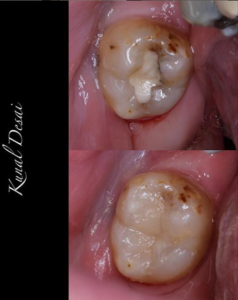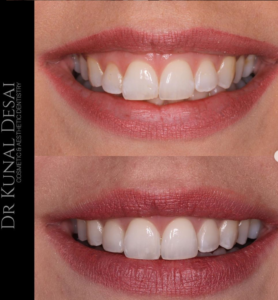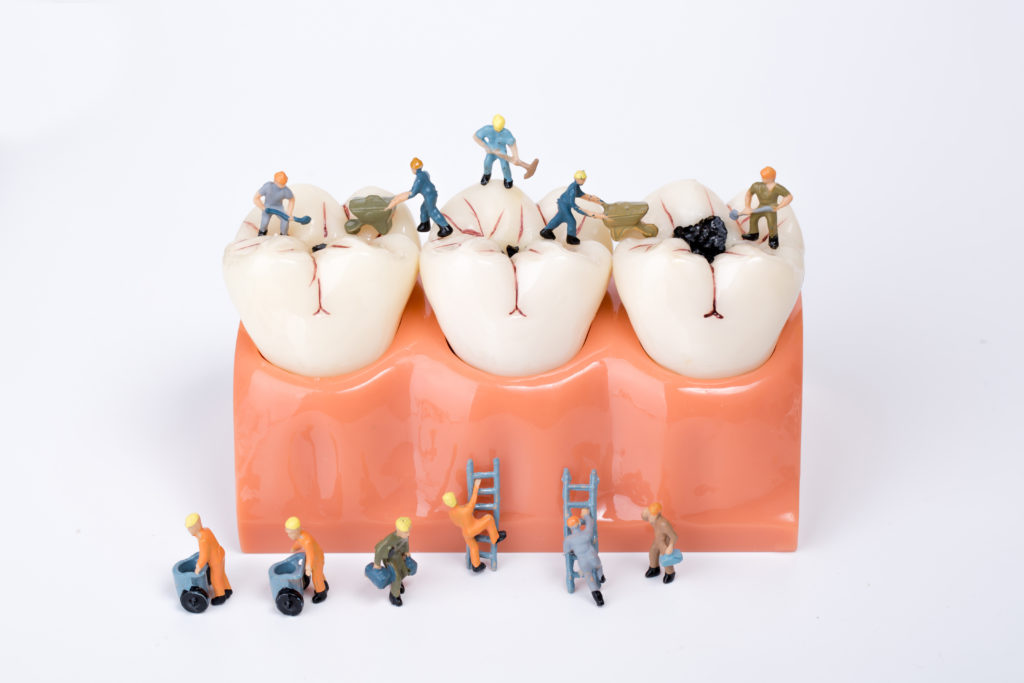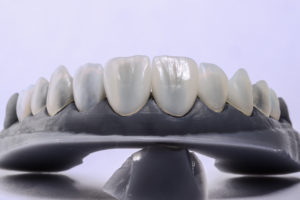Composite Bonding: Everything you need to know
Dr. Kunal Desai talks all things composite bonding and what you should be on the look out for before undergoing treatment.
With the growing popularity of minimally invasive cosmetic dentistry, the use of composite bonding has not only become a viable option for dentists, but also a reliable and affordable option for patients.
It is a white or tooth-coloured filling material which can be matched exactly to the colour of a tooth without the need to cut down the teeth drastically. It helps to preserve your natural enamel and due to the nature of composite, they can be easily repaired.
An overview
The procedure for anterior and posterior bonding first involves matching the filling to the colour of the tooth. An etchant gel is used to clean the teeth, followed by a dental adhesive which allows the dentist to stick the white filling to the tooth. Finally, the filling is layered in small increments before a blue light is shined to solidify it and secure the filling in place. Once your dentist is pleased with the overall shape of the composite, it can then be polished down and adjusted to a natural look that matches the rest of your teeth.

Composite used to complete the edges.
Your dentist may be able to give a guarantee to the longevity of your composite but nothing in dentistry lasts forever. After a prolonged period, your filling may begin to appear dull or stain. This is a common thing that happens in dentistry so the effected fillings should be replaced. It is a simple procedure to have a filling changed and, in some cases, anaesthetics may not even be needed.
Gold fillings cannot be repaired so easily and don’t have the same adhesive capabilities as composites
Those who have silver fillings will see that eventually they will begin to expand and cause cracks in their teeth, which can lead to decay getting underneath the filling. Large silver fillings will sooner or later cause wear on the tooth and will potentially need a crown. In these instances, your dentist may look to change them to white fillings to prevent the tooth from breaking and needing crowns in the future. Gold fillings which are produced in the lab are great for your teeth as they’re often long lasting. However, they do not provide the same benefits in sense that they cannot be repaired so easily and don’t have the same adhesive capabilities as composites.
What about the cost?
If the treatment is relatively small-scale, the cost is not likely to vary by much. For example, for the treatment of a small cavity an amalgam filling may be charged at around £80 or £90. For the same treatment using white filling, given that it is small, it may cost around £120. However, if your’re looking to cover a larger area, using white filling for example, the cost will likely be considerably high (£200-£250) as this will involve additional materials such as matrix bands.
Anterior vs Posterior composites
Anterior composite is generally more difficult to execute; it’s more visible, therefore there’s much more to consider. The final shape of the tooth must be symmetrical, and the polish must be amazing for the best outcome. On the other hand, in the case of posterior teeth, there is already a foundation which your dentist can follow in order to fill in the tooth.

Posterior composite: Temporary filling removed and Gaenial composite used to recreate natural anatomy
And what about the look?
Personally, I try to achieve a natural look for my patients. Some patients ask for their teeth to be shaved down to make them appear flat or to add fillings to the ends to make them entirely smooth. The downside to this is that it gives your smile an artificial appearance which looks unnatural, not to mention the fact that you’re drilling away perfectly healthy enamel which should be preserved.
I like to only use the amount of composite that is necessary and allow the art form to show through small effects and the care that has been put into the tooth, as opposed to adhering material and making it completely flat.
The concept of how an ideal set of teeth should be shaped and the anatomy of them originated from when we were making dentures at university. In most cases, it is said that the front two teeth should be roughly the same height as your canines. And the two adjacent, lateral teeth on either side should be slightly smaller. Usually, females tend to have rounder and softer edges whilst men have sharper edges. These are generally the parameters we would look at when designing a smile.
In addition to this, we also look at the patient’s face as a whole and consider what works for them. The fine details which needs to be focused on is decided by examining the condition of the existing teeth and factoring in small lines, brown marks or the translucency of the surrounding teeth.
Teeth condition and the dentist’s work
Each patient’s teeth are very much unique, and we all have distinct features. While some people have little to no imperfections, other patient’s conditions can make for more complex cases. Brown marks and translucent edges can make a case particularly difficult for your dentist to study and replicate for each tooth. It also requires additional equipment such as special tints to mimic the nature of the existing teeth.

Use of tints to recreate the translucency and create white opacities
When a tooth is comprised of one colour, it makes for a much easier job for the dentist. It may only call for one colour of composite which can be completed in a much shorter time frame.
The details of the process
Typically, a patient who’s looking to undergo treatment would sit through a consultation with the dentist to examine their current situation. This ensures the patient is aware of exactly what’s achievable with their smile.
This shouldn’t be a daunting process as it does not involve any injections
You may even be presented with a chair-side mock-up showing how your teeth would roughly look once they’re built up. This shouldn’t be a daunting process as it does not involve any injections. The dentist will solely focus the treatment plan and what options are available for you.
Your treatment will be carried out in a longer follow up appointment, and the duration of this will depend on the size of the composite and the dentist’s ability to replicate the natural look of a tooth. For me personally, a small white filling on a back tooth can be implemented easily and can be completed within half an hour.
For front teeth, a longer appointment is needed due to the complexity and the attention to detail that they require. Depending on the number of teeth you need treated, your dentist will allocate a time slot and you may find yourself in the dental chair between 1 to 4 hours. This does not mean it will be one continuous session; regular breaks will be given. Ultimately, its all done with the intention of leaving you with a smile you can be proud of.
› DIG DEEPER ‹

Learn more about mini smile makeovers here.

Or if it’s the Enlighten Teeth Whitening System you want to dig deeper into, then give it a click right here
And to find an Enlighten whitening expert near you, hit the button below.













Can composite bonding replace a vener or crown which has broken?
Hi! Unfortunately it can´t.